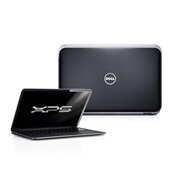Most Important Features in a Business Laptop
 Tuesday, January 8, 2013 at 8:02AM
Tuesday, January 8, 2013 at 8:02AM Buying a laptop suitable for your business needs is a decision that cannot be taken lightly—don’t wait until the last minute and be persuaded by the sweet talk of pushy salesmen. While business laptops may not be the “sexiest” models on the PC market, you can definitely rely on them when it comes to all-out performance and toughness. They are the perfect machine for on-the-go professionals. But with the overwhelming number of business laptops present in the market and the staggering pace in which new features and technologies are introduced by different brands, it becomes almost impossible for tech uncanny buyers to find at least a decent laptop to work with.
Given some research and patience, one could find a business laptop that best fits the bill. By identifying the most important features and specifications for your business laptop, you gain better purchasing power once you step into the crowded laptop market. Below are the must-have features for your business laptop. Without these features, a business laptop might as well be an expensive piece of machine.

How Much Power Does the Business Laptop Have?
Dual core processors, especially an Intel Core I Series or AMD E-Series, are the standard processing units for business computers. Although, quad core processors including Intel Core i7 and AMD A-Series are optional for more demanding applications. Intel-based laptops and their siblings, the AMD CPU-armed notebooks, employ extremely low voltage processors that lead to slimmer dimensions and better battery time of up to 9 hours or more. Higher powered, low voltage, and basic mobile processors rule the custom and entry-level laptop classes.
How much power a laptop can dish out under the hood is a vital factor you should strongly consider when shopping for a business laptop. Dual core processors will suffice for casual web browsing, emailing, and chatting while more strenuous functions like running multiple programs simultaneously and working with chunks of files demand at least Core 2 Duo or Quad Core APUs.
How Much RAM Do You Need?
Look for a minimum of 4GB RAM. Anything that goes under that benchmark is not worth the extra dollars you save. Graphics-based users will gladly welcome 8GB memory to aid in speeding up projects, yet 4GB is an extravagant amount of RAM for the average employee. The appropriate amount of memory enables you to multitask, such as opening multiple applications and windows simultaneously and performing multimedia work in a much faster fashion. If your business laptop is operating integrated graphics or if you're the kind of user who opens 15 tabs in your browser at a given time, you will definitely require more than 2GB of memory.
How Much Storage Do You Need?
With enterprises and businesses being increasingly immersed in the world of multimedia including videos, PowerPoint presentations, and megapixel images for their business meetings or marketing campaigns. Choosing between the 500GB to 750GB hard drive variants will offer you with a decent balance between space and cost-efficiency. While lacking in storage capabilities and slightly more expensive, solid-state hard drives do not feature any rotating components hence making them more superior to their counterparts.
Optical drives are less valued for consumer computers nowadays strongly due to the fact that users are capable of streaming videos and listening to music or downloading content straight to a hard drive. However, IT specialists are reluctant to replace them since they may have to burn copies of projects for clients and partners and, at the same time, read CDs or DVDs sent by them.
Aside from these mentioned features, make sure to account for portability and weight, battery, screen size, and networking and connectivity. There are also other factors that may influence your decision including budget and style preferences.
Author Bio:
Brian Jensen works with Dell. In his spare time he enjoys traveling, cooking, and spending time with his family. He has a passion for learning and writing about all things technology.
 Gadgets,
Gadgets,  Technology,
Technology,  business,
business,  computers in
computers in  Technology
Technology 

















Reader Comments